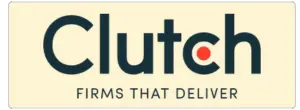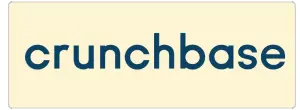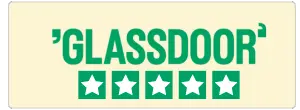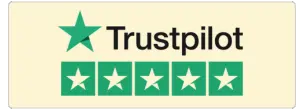Link Building: Techniques and Best Practices for SEO Success
July 14, 2023
In the dynamic world of search engine optimization (SEO), link-building remains a crucial strategy for enhancing website visibility and driving organic traffic. “Link Building: Techniques and Best Practices for SEO Success” is a comprehensive guide that unravels the art and science of effective link building.
Whether you’re a seasoned SEO professional or a novice marketer, this book equips you with the knowledge and tools to navigate the ever-changing link-building landscape.
This blog provides easy-to-understand information and useful tips to help you succeed in SEO by building strong and effective links. It covers everything from basic ideas to advanced strategies.
What Is Link Building?

Link building is the art of acquiring hyperlinks from other websites to your own. It’s like building a network of connections across the vast online landscape. These links work like approvals, showing search engines that your website is reliable and related to the topic. They act as a vote of confidence, signaling that other websites find your content trustworthy and valuable.
Imagine your website is a party, and each link is an invitation from another website to attend. The more quality invitations you receive, the more popular and important you appear to search engines.
But here’s the twist: not all invitations are created equal. Search engines value links from reputable, authoritative websites more than those from random or spammy sources. It’s like getting an invitation from a popular celebrity versus an unknown stranger.
To win at link building, you need to be strategic. You can create amazing content that naturally attracts links, like a magnetic personality that draws others in. You can also contact website owners and explain to them why it would be beneficial for their visitors and reputation to link to your site. By convincing them of the advantages, you can encourage them to include links to your website.
Remember, the goal is to build an impressive network of links that elevate your website’s credibility, increase its visibility in search results, and ultimately drive more traffic. So start building those valuable connections in the vast online party of the internet!
How Does Link Building Work?

Link building is like weaving a web of connections across the vast landscape of the internet. It’s a strategic dance where websites hold hands and give each other a boost in popularity.
Imagine you’re a website owner and want your online kingdom to thrive. It would help if you had other websites to recognize your worth and credibility to achieve this. How? Through link building!
It starts with creating exceptional content that captivates readers and web admins alike. Once your content shines like a beacon in the digital realm, other website owners will notice. They’ll appreciate your expertise and relevance, eager to share it with their visitors.
These generous souls will embed hyperlinks within their content, directing their readers to your website. These links act as virtual nods of approval, telling search engines that you’re a trustworthy source. As the number of quality links pointing to your website increases, so does your online authority.
But wait, not all links are created equal! The real magic lies in acquiring backlinks from reputable websites relevant to your niche. It’s like receiving recommendations from experts in your field. The more endorsements you gather, the higher the search engines will rank you.
However, tread carefully! Search engines despise deceitful tactics and spammy link farms. So, it’s crucial to play by the rules. Focus on building genuine relationships, earning natural backlinks, and contributing value to the internet community.
Link building is an art that intertwines collaboration, creativity, and credibility. By embracing this web of connections, you’ll elevate your online kingdom, attracting more visitors and reigning supreme in the digital realm.
Why Are Links So Important?

Links are like the secret sauce of the internet, sprinkling magic and connectivity into the vast web of information. They serve as digital bridges, connecting different websites, pages, and resources. But why are these humble hyperlinks so important? Let me explain with a touch of creativity.
1. Explore New Worlds
Links are like portals to uncharted territories. They transport you from one webpage to another, inviting you to dive into a world of endless possibilities. Like Alice falling down the rabbit hole, clicking a link can lead you to fascinating discoveries, from insightful articles to captivating videos.
2. Boost Visibility
Imagine links as neon signs in the bustling streets of the internet. Search engines use links to navigate and discover new content. When your website receives quality inbound links from reputable sources, search engines consider it a vote of confidence. This helps improve your website’s visibility in search results, making it more likely to attract visitors.
3. Web of Trust
Trust is the foundation of any meaningful relationship, and the internet is no exception. Links provide a way for websites to vouch for each other’s credibility. When a trustworthy website links to your content, it signals to others that your information is reliable. In this vast digital universe, links act as endorsements, building a web of trust that keeps the internet’s ecosystem healthy.
4. Sharing is Caring
In the age of social media, links are the lifeblood of content sharing. Whether it’s a thought-provoking blog post or a hilarious cat video, links make it easy to spread the word and share the love. With a simple click, you can easily share a link with anyone, whether it’s a friend, family member, or even someone you don’t know in another part of the world. This helps create connections and sparks conversations, bringing people closer together.
5. Connectivity for All
The internet thrives on connections, and links are the glue that holds it all together. They create pathways between websites, allowing users to navigate seamlessly and explore vast information. Links empower us to jump from one idea to another, weaving a rich tapestry of interconnected knowledge.
How to Find High-Quality Links?

Finding high-quality links is essential for effective search engine optimization (SEO) and increasing your website’s visibility. Here’s a crisp and creative guide to help you in your quest for high-quality links:
1. Content Excellence
Create great informative, unique, and valuable content for your target audience. Other websites are more likely to link to your content naturally when it is exceptional.
2. Guest Blogging
Seek opportunities to contribute guest posts on reputable websites within your industry. Write high-quality articles that provide value to readers, and include a relevant link back to your website. Focus on authoritative websites with a strong online presence.
3. Broken Link Building
Find websites that have broken links, which lead to non-existent pages. Get in touch with the owners of the websites and suggest that they replace the broken link with your content. Make sure your content is useful and related to increase the likelihood of them accepting your offer.
4. Influencer Partnerships
Collaborate with influencers, bloggers, or industry experts with a significant following and a good online reputation. They can mention and link to your website in their content, generating quality backlinks and driving traffic.
5. Resource Pages
Identify websites that have resource pages or lists related to your niche. Reach out to the website owners and suggest your content as a valuable addition to their resource page. This approach works best when you have comprehensive, well-researched content.
6. Social Media Sharing
Promote your content to reach a wider audience through social media platforms. When people discover your content and find it useful, they may link to it from their websites or share it on social media, creating organic backlinks.
7. Competitor Analysis
Analyze your competitors’ backlink profiles to identify potential opportunities. Look for websites that link to multiple competitors but not to your website. Reach out to these websites and showcase the value your content can provide to their audience.
8. Online Directories
Submit your website to reputable online directories and niche-specific directories. Ensure the directories are legitimate, well-established, and relevant to your industry. This strategy can generate high-quality links and improve your website’s visibility.
9. HARO (Help a Reporter Out)
Sign up for HARO to receive email notifications about journalists and bloggers looking for expert opinions or contributions. Respond to relevant queries, and, if chosen, your expertise and website may be featured with a backlink in the resulting article.
10. Build Relationships
Engage with other website owners, industry influencers, and bloggers through meaningful interactions. Attend conferences, webinars, and forums to connect with like-minded individuals. Building genuine relationships can lead to natural link opportunities over time.
How to Get World-Class Links With Content Marketing?

To obtain world-class links through content marketing, follow these straightforward and creative steps:
1. Craft Exceptional Content
Make sure to create content that is excellent, original, and interesting, offering something valuable to the people you want to reach. By providing high-quality content, you can capture the attention and interest of your intended audience. It could be in the form of informative articles, insightful videos, interactive infographics, or compelling case studies.
2. Identify Link-Worthy Topics
Research and identify topics that are relevant to your industry and have the potential to attract attention from authoritative websites and influencers. Look for knowledge gaps, emerging trends, or controversial issues that spark interest.
3. Conduct Outreach
Reach out to industry experts, influencers, and website owners who have a strong online presence. Personalize your outreach emails and highlight the value your content brings to their audience. Make a compelling case for why they should consider linking to your content.
4. Collaborate with Influencers
Collaborate with influential individuals in your industry to co-create content. This could involve interviews, guest blogging, or joint webinars. You can increase the chances of obtaining world-class links by leveraging their audience and expertise.
5. Publish on High-Authority Platforms
Seek opportunities to publish your content on renowned platforms in your niche. Guest posting on authoritative websites exposes your content to a broader audience and increases the likelihood of earning valuable backlinks.
6. Utilize Visual Assets
Create visually appealing and shareable assets like infographics, data visualizations, or interactive tools. These assets are more likely to be shared and linked to as they provide a rich and engaging user experience.
7. Promote Your Content
Utilize social media platforms, newsletters, and other marketing channels to spread the word about your content. Share your content with others using these channels to make it more visible and reach a larger group of people. By distributing your content through various platforms, you can expand its exposure and ensure that it reaches a wider audience. The wider your content reaches, the more likely it is to be discovered and linked to by others.
8. Monitor and Build Relationships
Keep track of mentions, shares, and backlinks your content receives. Engage with the individuals or websites that link to your content by thanking them and exploring further opportunities for collaboration. Building strong relationships can lead to future link-building opportunities.
9. Leverage Data and Research
Conduct original research or compile data from credible sources to create unique reports or studies. Such content is highly valuable and attracts attention, citations, and backlinks from other researchers, journalists, and industry professionals.
10. Optimize for Search Engines
Ensure your content is well-optimized for search engines by incorporating relevant keywords, meta tags, and descriptive headings. When you do this, there is a greater chance that your content will show up higher in search results. This means more people will discover it without any extra promotion. As a result, your website will receive more visitors, and other websites may be more inclined to link to your content.
How to Build Powerful Links With Email Outreach?

Building powerful links with email outreach involves reaching out to website owners, bloggers, and influencers to establish relationships and earn backlinks to your website. Here’s a crisp and creative step-by-step process to help you:
1. Research and Identify Prospects
Begin by identifying websites or influencers relevant to your niche. Look for those with high domain authority and engaged audiences. Tools like Moz, Ahrefs, or SEMrush can help you find potential targets.
2. Personalize Your Outreach
Craft a compelling and personalized email for each prospect. Mention specific details about their website or content to show genuine interest. Personalization demonstrates that you’ve done your homework and increases the chances of a positive response.
3. Offer Value
Provide something valuable to the recipient in exchange for a backlink. This could be high-quality content, data, infographics, or even a mutually beneficial collaboration opportunity. Ensure your offer aligns with their interests and adds value to their audience.
4. Write an Engaging Subject Line
Create a catchy and intriguing subject line that entices the recipient to open your email. Avoid generic or spammy-sounding subject lines. Instead, focus on piquing their curiosity or offering a clear benefit.
5. Craft a Compelling Email Body
Keep your email concise, engaging, and well-formatted. State your purpose clearly and concisely, highlighting the value you can provide.
To make the text easier to read, use bullet points or subheadings. This help break up the content into smaller, organized sections, making it more visually appealing and allowing readers to navigate and understand the information more easily.
6. Personalize the Opening Line
Start your email with a personalized opening line to grab the recipient’s attention. Mention something specific about their work, recent article, or achievements to show that you’ve taken the time to research them.
7. Showcase your Expertise
Briefly highlight your expertise and credibility, demonstrating why the recipient should consider collaborating with you or linking to your content. Mention any relevant accomplishments, awards, or previous successful collaborations.
8. Make the Request
Politely and ask for the backlink, explaining how it benefits both parties. Be specific about the page or content to which you want them to link and provide any necessary details or instructions.
9. Follow Up
If you haven’t received a response within a week or two, it’s okay to send a friendly email to follow up. Just politely check in and see if there are any updates or if they might have missed your previous message. It’s common for people to overlook or forget to respond, so a gentle reminder can increase your chances of getting a reply.
10. Maintain Relationships
Even if you wait to secure a link immediately, continue building relationships with prospects. Engage with their content, share their work on social media, or offer feedback. Nurturing these connections increases the likelihood of future collaborations and link opportunities.
What Are The Best Link Building Strategies?

The Best Link Building Strategies are key techniques to enhance your website’s search engine visibility and authority by acquiring high-quality backlinks from other reputable websites. Here are a few crisp and creative strategies:
1. Create Compelling Content
Craft unique and valuable content that naturally attracts links from other websites. Focus on creating informative articles, engaging infographics, entertaining videos, or interactive tools that people will want to share and link to.
2. Guest Blogging
Write high-quality articles for reputable websites in your industry as a guest author. This allows you to showcase your expertise and gain backlinks from authoritative sources.
3. Influencer Outreach
Collaborate with influential bloggers, social media personalities, and industry experts to create content. Their endorsement and promotion can lead to valuable backlinks from their followers.
4. Broken Link Building
Discover broken links on other websites and propose your own relevant content as an alternative. Let the website owners know about the broken link and offer your content as a helpful replacement that aligns with their topic or subject.
5. Resource Link Building
Create comprehensive and well-researched resource guides or directories in your niche. Reach out to relevant websites, inform them about your resource, and politely request that they consider linking to it if they find it valuable.
6. Skyscraper Technique
Identify popular content in your industry and create something even better. Reach out to websites linking to the original content and showcase your superior version, increasing the likelihood of them linking to your content instead.
7. Build Relationships
Engage with other website owners, bloggers, and influencers through social media, forums, or industry events. Developing genuine connections can lead to organic link opportunities and collaborations.
8. Local Citations
Ensure your business information (name, address, phone number) is consistent across online directories, local listings, and review sites. This helps improve your website’s local search rankings and generates relevant backlinks.
What is Content Promotion With Rich Visuals?

Content Promotion With Rich Visuals is a powerful and captivating strategy used to attract and engage audiences by utilizing visually appealing elements in promoting content. It involves incorporating compelling images, videos, infographics, and other visual assets to enhance the presentation and visibility of your content.
By leveraging rich visuals, you can grab attention, evoke emotions, and convey information more effectively than plain text alone. Here’s a crisp and creative breakdown of the benefits and techniques involved in content promotion with rich visuals:
1. Memorable Impact
Rich visuals create a lasting impression on viewers’ minds, increasing the likelihood of content retention and recall.
2. Increased Engagement
Visual elements encourage higher audience engagement as they make content more interactive, entertaining, and shareable.
3. Improved Comprehension
Visuals aid in conveying complex information quickly and succinctly, enabling viewers to grasp key concepts more easily.
4. Enhanced Branding
Incorporating consistent visual elements like logos, colors, and fonts in your content promotion helps strengthen brand recognition and recall.
5. Social Media Optimization
Platforms like Instagram, Pinterest, and YouTube thrive on visual content.
To make your content stand out and capture people’s interest on these platforms, include attractive pictures and videos. By incorporating visually appealing elements, you can increase the visibility of your content and make it more engaging for the audience. By incorporating visually appealing elements into your content, you can attract more attention and increase engagement from the audience.
6. Infographics and Data Visualization
Infographics and data visualization allow you to present complex data and statistics in a visually appealing and easily understandable format, making information more digestible for your audience.
7. Video Marketing
Video content is highly engaging and can communicate your message dynamically and effectively. Utilise videos to promote your content and captivate your audience.
8. Interactive Visuals
Incorporating interactive elements, such as quizzes, polls, and interactive infographics, can boost engagement and encourage audience participation.
9. Visual Storytelling
Use compelling visuals to tell a story that resonates with your audience, evoking emotions and driving them to take action.
10. Visual Consistency
Maintain a consistent visual style across your content promotion efforts to reinforce your brand identity and create a cohesive and professional image.
What is Digital PR Using Content?

Digital PR, in the context of content, refers to the strategic use of compelling and engaging digital content to build brand awareness, enhance reputation, and generate positive online visibility. It involves leveraging various online platforms, such as websites, blogs, social media, and online publications, to distribute and promote content that captures the attention and interest of the target audience.
Digital PR professionals use the content as a powerful tool to craft captivating stories, share valuable insights, and spark meaningful conversations. They create and curate content in formats like articles, videos, infographics, podcasts, and interactive experiences to resonate with the target audience and establish the brand as a thought leader in its industry.
By leveraging content, digital PR helps organizations achieve several goals. It improves brand credibility and trust by providing informative and valuable content that positions the brand as an expert and builds a positive reputation. It drives traffic and engagement by creating content that is shareable, relatable, and easily consumable. It also enhances search engine visibility through optimized content that ranks well in search results, thereby increasing organic traffic and brand exposure.
What is Top-Funnel Content That Ranks?

Top-funnel content refers to content that is created and optimized for the early stages of the customer journey. It aims to attract and engage a wide audience, often focusing on generating brand awareness and sparking interest in a particular topic or industry. While top-funnel content may not directly lead to immediate conversions, it plays a crucial role in building a strong online presence and establishing credibility.
Here are five types of top-funnel content that can effectively rank and capture attention:
1. Informative Blog Posts
Craft compelling articles that educate readers about industry trends, best practices, or answer common questions. Use catchy headlines, engaging storytelling, and relevant visuals to make the content easily digestible and shareable.
2. Engaging Videos
Create visually appealing and informative videos that entertain, inspire, or educate your target audience. Whether it’s an animated explainer video or a behind-the-scenes glimpse of your company, make sure the content is captivating and resonates with your viewers.
3. Interactive Infographics
Present data, statistics, or complex concepts in a visually appealing and interactive format. Infographics are great for sharing on social media platforms and can bring more visitors to your website if they are optimized correctly. They are visually appealing and easily shareable, making them an effective way to attract attention and redirect traffic to your site.
4. Comprehensive Guides
Develop comprehensive and authoritative guides that provide in-depth knowledge on a particular subject. These guides can be in the form of ebooks, whitepapers, or downloadable PDFs. Make sure the content is well-researched, visually appealing, and adds value to your target audience.
5. Engaging Social Media Content
Create attention-grabbing and shareable content for various social media platforms. Use a mix of visuals, short videos, and compelling captions to pique the interest of your followers and encourage them to engage with your brand.
What are Link Building Resources?

Link-building resources are valuable tools, strategies, and techniques that help website owners and digital marketers acquire high-quality backlinks to their websites. These resources act as catalysts, enhancing a website’s online presence, authority, and search engine rankings.
Imagine link building as a digital networking party where websites mingle and exchange recommendations. Link-building resources are like charismatic party hosts who connect websites, creating strong and influential relationships.
Here are a few notable link-building resources that can skyrocket your website’s popularity:
1. Content that Rocks
Creating amazing and shareable content is like hosting a legendary party. Craft engaging blog posts, informative articles, captivating videos, and interactive infographics that people can’t help but link to and share with others.
2. Outreach Wizards
Outreach tools and platforms help you reach out to other website owners, influencers, and bloggers, extending an invitation to join the link-building party. Personalized emails, social media interactions, and guest posting requests are some magical spells these outreach wizards cast.
3. Social Media Hype
Social media platforms act as bustling gathering spots where people discover and share content. Promote your website through engaging posts, captivating visuals, and thought-provoking discussions, attracting attention and potential backlinks.
4. Directory Listings
Directories are like classifieds that categorize and showcase websites. Submitting your website to relevant directories is like sending formal invitations to the right crowd, increasing the chances of being linked by authoritative websites.
5. Influencer Collaborations
Influencers are the cool kids of the online world with a dedicated following. Partnering with influencers in your niche is like throwing an exclusive party where influential guests vouch for your website and share it with their loyal fans.
6. Guest Posting Opportunities
Offering to write guest posts for reputable websites allows you to showcase your expertise and gain valuable backlinks. It’s like being invited as a guest speaker to share your wisdom and receive a standing ovation through backlinks.
7. Link-worthy Resources
Creating valuable resources like comprehensive guides, research papers, and free tools positions your website as an authority. Others will flock to link to these resources, perceiving them as valuable contributions to their content.
Advanced Link Building Tips

Here are some crisp and creative advanced link-building tips:
1. Skyscraper Technique
Identify popular content in your niche, create a better version, and reach out to websites linking to the original content, offering them your improved resource.
2. Guestographics
Create visually appealing infographics related to your industry and offer them as guest contributions to high-quality websites. This can attract backlinks and increase brand visibility.
3. Broken Link Building
Find broken links on relevant websites and contact the site owners, suggesting your content as a replacement. It’s a win-win situation where you help them fix broken links while gaining a valuable backlink.
4. Influencer Partnerships
Collaborate with influencers or experts in your industry to create valuable content. They can promote the content to their audience, potentially leading to backlinks and increased visibility.
5. Original Research and Data
Conduct unique research or collect industry-specific data to create valuable reports or studies. Such content is highly shareable and can attract natural backlinks from authoritative sources.
6. Resource Link Building
Create comprehensive resource pages on your website that cover a specific topic in-depth. Reach out to relevant websites and bloggers, informing them about your resource, and encourage them to link to it.
7. Participate in Expert Roundups
Engage in expert roundups where multiple industry professionals share their insights on a particular topic. When your contribution gets published, it often includes a backlink to your website.
8. Utilise Social Media
Share your content on social media platforms to increase its visibility. Engage with influencers, industry leaders, and communities, as they may discover your content and link to it.
9. Monitor Competitors
Monitor your competitors’ backlinks and identify opportunities they might have missed. Reach out to the same websites and offer your content as a relevant alternative.
10. Build Relationships
By connecting and building relationships with other website owners, bloggers, and influential people in your industry, you can gradually find opportunities for getting natural links to your website. As you establish meaningful connections, it becomes more likely that others will naturally link to your content, benefiting your overall link-building efforts. Attend conferences, join online communities, and engage in meaningful conversations.
Conclusion
In conclusion, effective link-building techniques and best practices are crucial for achieving SEO success in the ever-evolving digital landscape. This article has explored various strategies that can help websites establish authoritative backlinks and enhance their online visibility.
By focusing on high-quality content creation, fostering meaningful relationships with relevant websites, leveraging social media platforms, and monitoring link health, businesses can boost their search engine rankings and attract targeted organic traffic.
However, it is essential to remember that link building should always prioritize user experience and adhere to search engine guidelines. With a thoughtful and comprehensive approach to link building, websites can position themselves for long-term SEO success and stay ahead of the competition.
Table of contents
- Why your startup should seek funding
- Do startups have difficulties raising money?
- At what stage can your business seek funding?
- The different investment options for startups
- Do startups have difficulties raising money?









.png)